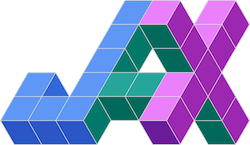Creating Robust Representations from Pre-Trained Image Encoders using Contrastive Learning
Sriram Ravula, Georgios Smyrnis
This is the code for our project "Creating Robust Representations from Pre-Trained Image Encoders using Contrastive Learning". We make use of contrastive learning and OpenAI's CLIP to find good embeddings for images with lossy transformations.
Requirements
In order to run the code for our models, it is necessary to install pytorch_lightning and all of its dependencies. Moreover, it is necessary that the following files from the OpenAI CLIP repository (https://github.com/openai/CLIP) are added, along with their respective requirements:
model.pyclip.pysimple_tokenizer.pybpe_simple_vocab_16e6.txt.gzFor simplicity, we have copied these required files into our own code. To run the examples, make sure to download some checkpoint files, available here: https://drive.google.com/drive/folders/1wvm8lMSsQZU8YF_AXIhdqsHV7x6gg9rZ?usp=sharing.
Structure
The following source files are required to execute the various experiments mentioned in our report:
baselines.py: Code which performs training and evaluation of the baseline end-to-end supervised model.noisy_clip_dataparallel.py: Performs training and evaluation of the student model, based on the CLIP architecture.zeroshot_validation.py: Performs evaluation of the zero-shot model.linear_probe.py: Performs training and evaluation of a linear probe on top of the learned representations.noise_level_testing.py: Evaluation of a trained model on various noise levels added in the input.utils.py: General library for functions used throughout our code.
We also provide slice_imagenet100.py, a code to be used one time to generate the ImageNet-100 subset we used, as defined by imagenet100.txt. In order to run most of the code we provide, please first run this file with the proper source path to the full ImageNet dataset (can be downloaded separately at https://image-net.org/download) and desired destination path for the 100-class subset. Then, provide the path to your 100-class ImageNet subset in the yaml config files. For further details, refer to the comments in slice_imagenet100.py and the global variables set at the beginning of the script.
In the config/ folder, some sample configuration files for our experiments are included.
Examples
Using the following snippets of code, the experiments described in the report can be run. Note that editing the batch_size and gpus parameters of the sample files will lead to speedup and increased performance for the contrastive models.
Short_Evaluation_Demo.ipynb: A small demo of the types of distortions we use, as well as a comparison between the baseline and linear evaluations. You will need to download the checkpoints from the google drive link for this to run.python baselines.py --config_file config/Supervised_CLIP_Baselines/sample.yaml: Train a baseline model, in an end-to-end supervised fashion.python noisy_clip_dataparallel.py --config_file config/NoisyRN101/sample.yaml: Trains a CLIP model using contrastive learning.python zeroshot_validation.py --config_file config/NoisyRN101/sample.yaml --ckpt_file rand90_zeroshot.ckpt: Performs zeroshot evaluation of a trained zero-shot clip model. The sample file to be used is the same one specified during training (for flexibility, checkpoint file provided separately).python linear_probe.py --config_file config/LinearProbeSubset/sample.yaml: Trains a linear probe on top of a representation learned using contrastive loss. This requires the user to specify a checkpoint file in the yaml config file.python noise_level_testing.py --config_file config/NoiseLevelTesting/sample.yaml: Evaluates a trained model for various levels of noise in the dataset. This requires the user to specify a checkpoint file in the yaml config file.

